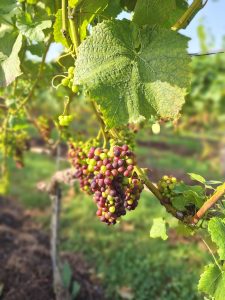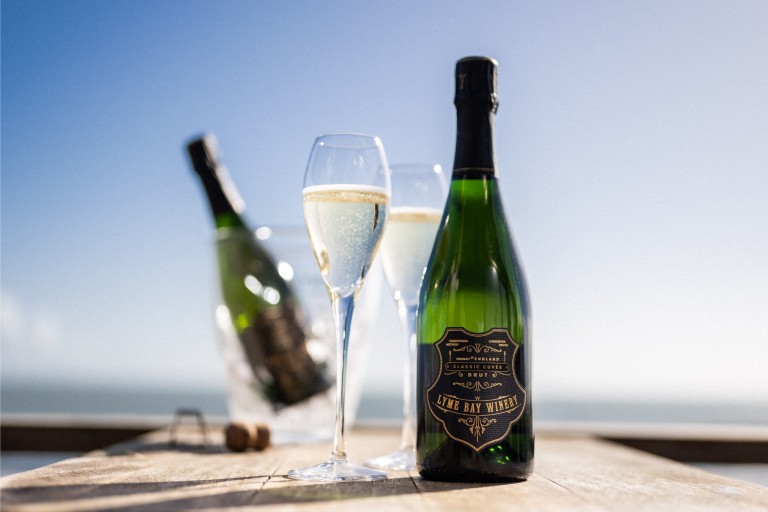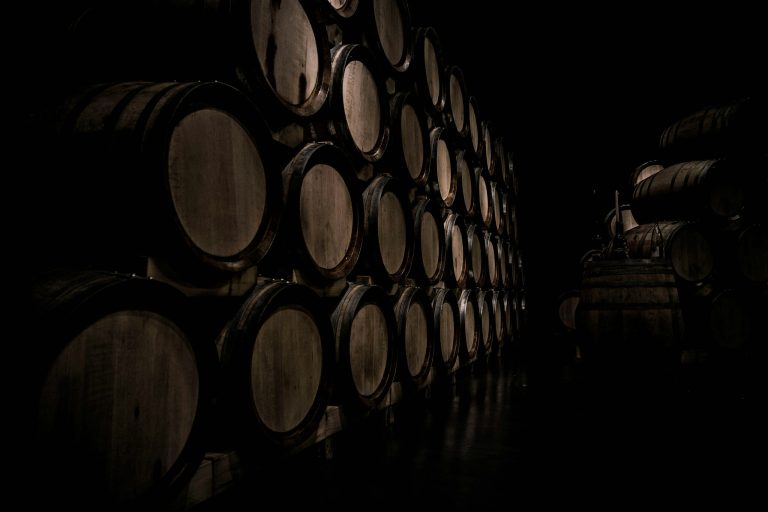As we wave a fond farewell to the long days of summer and come to the end of the growing period in our vineyards, our growers are looking ahead to ripening season and harvest time to produce more exceptional English wine.
Over in Essex, we source some of our Pinot Noir, Chardonnay and Bacchus grapes from Martin’s Lane Vineyard in the village of Stow Maries near Maldon. Established as a partnership in 2008 by a group of families and friends, Martin’s Lane sits in 30 acres of steep sloping meadowland on the north side of the Crouch Valley – an area that regularly boasts the warmest summer temperatures and lowest rainfall in the country.
However, while much environmental news of late revolves around climate change and global warming, for English winegrowers 2021 has delivered mostly the opposite weather effects, and these have posed their own very special challenges in abundance.
“We can often forget when enjoying a wonderful glass of wine what roller-coaster experiences often lie behind the story of its creation”, says Martin’s Lane partner Roy Martin, “and the weather events of this year provide a good opportunity to describe some of the obstacles that wine producers are navigating in their efforts to attain top quality fruit.
“Firstly, there was the belated bud burst following a very cold April and early May, which resulted in frost damage in many parts of this country and widely across France. Even here along the Crouch Valley in Essex, where the effects of frost were fortunately avoided again, we were still nearly three weeks adrift of where we were in 2020 by the time the season was underway.”
Thankfully a spell of warm weather in late May hastened the appearance of the inflorescences needed to develop into grape bunches which, remarkably, saw flowering occur very much back on time during the last week in June. But this turn-up for the books was not to last.

“For a successful fruit-set (and the flowers are self-pollinating) a good spell of dry weather is normally desirable”, says Roy, “but further rain about that time made sure this was not to be and we feared the size of crop could be affected. However, yet again we were greatly surprised by mid-July to see that generous berry clusters had formed across all grape varieties in the vineyard.”
The ups and downs continued as, barring one very warm week, there were further wet spells throughout much of July which brought with them other dangers.
“Rain events followed by humid conditions in the vineyard can create ideal circumstances in which outbreaks of downy mildew can occur”, says Roy, “which can result in fatal reductions in leaf photosynthesis and lead to serious crop loss. There have been many instances of the condition reported across the country this year, and once again even in France, the grape crop has been greatly reduced as a result of this.
“Fortunately, our vineyard team were able to recognise the potential for these conditions at an early stage and in anticipation took the necessary precautions. Thanks to the application of appropriate pre-infection fungicides combined with careful leaf canopy management we seem to have escaped any effects of this dangerous fungal disease that first appeared in Europe from North America.”
The very steep sloping site at Martin’s Lane is also invaluable in ensuring there is always good airflow and circulation throughout the vineyard, which Roy and his team believe helps dissipate the static humid conditions in which this fungal condition can thrive. What’s more, the warmer, drier weather conditions of August should have hopefully led to the onset of veraison – the ripening of the grapes – by early September.
“Decisions have yet to be made on ‘fruit thinning’ to ensure we achieve the greatest possible ripeness in the fruit”, says Roy, “but despite all that has gone before us, past records are indicating we are close to the timetable we last saw in 2016. A long-settled autumn period that year led us to some of the finest fruit and wines we have produced at Martin’s Lane, so let’s hope for a repeat performance and carry on the ‘white knuckle’ ride.”


